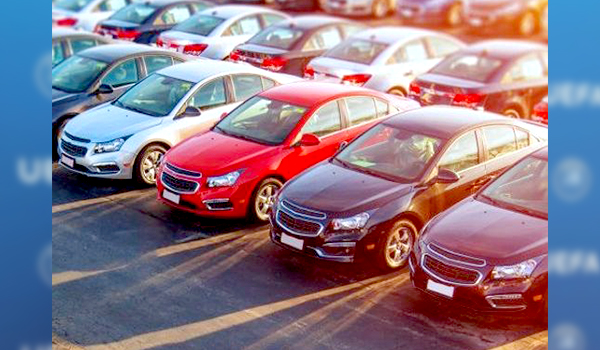By Ridhi Suri
Cars are the incarnation of human imagination, they are not just pieces of metal and engineered marvels but carry a sense of emotions attached.
So, just like we humans need a name to differentiate ourselves so are our cars!
Some of us may already recognise that cars have the same layout of the human face, if we look closely at a Volkswagen Beetle or a Porsche 993 S or Toyota Supra, one can very well understand the concept of how these beauties are imagined and brought to life.
Traditionally, most manufacturers would favour consistency of naming. For example, Volkswagen would often name models after winds (Scirocco, Passat, Jetta), or Lamborghini would use the name of bulls. “There are historical heartlands where brands have tried to have product families, but they then try to stretch their portfolios,” says Robert Pyrah, head of strategy at creative agency Brandwidth.
“Ford for years went with names beginning with F – Focus, Fusion, Fiesta – but then it has things like the Kuga and C-Max, which says ‘Look, our core products are over here – these reliable-sounding, real words starting with F – and out here is a different name to signal a different kind of product’.”
The naming conventions run through market segments. Letters such as Q and K often denote ruggedness in the SUV sector (think Qashqai and Karoq), whereas E and I are common signifiers of electric and hybrid cars, which tend to have scientific-sounding names (Ioniq or Volt). “It only takes one company to stick its neck out in a particular style of vehicle and then everyone else starts doing it,” says Pyrah.
“Nearly all SUVs have technical-sounding names. Graphically challenging letters like K and Q have become a convention. Also, changing the name in this way makes the word easier to trademark.”
If the letters such as A, B, C, etc, are used as the prefix to the model number, then they represent the ‘Class’ or group of models.
The letters which are used as a suffix usually denote the variant or body-style of the car. The letters “AMG” represent ‘Sports’ segment – which is the Sports / Custom version of existing models.
When it comes to “Tata Motors”- it intended to name one of their production as ‘Zica’ (acronym derived from Zippy Car) as the right and responsible action following the hardships caused by the virus outbreak across many countries, in order to show empathy towards those affected by it but later renamed it as ‘TIAGO’.
Mayank Pareek, President, Passenger Vehicles Business Unit, Tata Motors, said “We are delighted with the response and support we have received from our well-wishers across the globe through the Fantastico Name Hunt campaign. We are proud to announce the new name – TIAGO for our next new hatchback.”
The #Fantastico Name Hunt commenced with a global crowd-sourcing initiative, inviting netizens, both within and outside India, to participate in the name hunt for the car. Within three days, 48 million enthusiasts engaged with the brand on social platforms with more than 37,000 car enthusiasts submitting their suggestions through social and mobile channels. TIAGO became the chosen name from the final three entries – Tiago, Civet and Adore that were opened up for the audience voting.
Mahindra & Mahindra, the indigenous and largest utility car manufacturer in India is on a completely different dimension for the past couple of years. From naming the car more conventionally like Bolero and Scorpio, Mahindra has moved towards unconventional and modern names like XUV500 and TUV300.
And so much is their love for the letter ‘O’ as every car name ends with ‘O’, that they have retained the ‘O’ in the new names (at least verbally).
Mahindra named their new cars as XUV500. The X – Generation X, UV states Utility Vehicle and 500 – Series (5 double ‘Oh’) XUV500 was aimed at the young generation and hence the name starts with ‘X’ which implies Generation X. And, 500 implies to the bigger set of engine Mahindra is using and from here on, any new vehicle using the same engine will bear the 500 moniker.
Then TUV300. T stands for Tough, UV – Utility Vehicle and 300 – Series (3 double ‘Oh’). The 300 in the name was used for the new generation mHawk80 engine, which made its debut with the TUV300.
“In the 1910s one started seeing more cars with brand names, especially in the luxury sector,” says Andrew Beckman, the archivist at the Studebaker National Museum in Indiana. Studebaker was emblematic of this sort of incremental change: Studebaker produced a number of cars with “Six” in the name, indicating a six-cylinder engine, but after Big Six, Light Six, Special Six, and a few others, basically ran out of adjectives. The Big Six, in 1928, was renamed the President.
The first cars under the Mercedes-Benz name came out in 1926, and the company quickly became a legend in auto-racing as well as somewhat more questionable industries. Hitler drove around in a Mercedes-Benz 770K, named for its gigantic 7.7-litre engine. The majority of the European carmakers didn’t cross the Atlantic into the US market until after World War II, but they came in rapid succession beginning around 1950. Jaguar and Alfa Romeo came in the late 1940s, and the Germans came in soon after: Mercedes-Benz, BMW, Volkswagen.
In 1965, Mercedes-Benz decided to bring out its contract with Studebaker, a new ad campaign pitched Mercedes-Benz cars as something different — something better. The new strategy worked. “Mercedes in particular and European brands in general are kind of the progenitor of alphanumeric names,” says Beckman. “As their prestige rose in the market, I think other companies tried to emulate them.”
Talking about ‘Lamborghini’ -The world of bullfighting is a key part of its identity. Lamborghini, a Taurus himself, was so impressed by the majestic Miura animals that he decided to adopt a raging bull as the emblem.
The automaker continues to draw upon the bullfighting connection. The ‘Islero’ was named for the Miura bull that killed the famed bullfighter Manolete in 1947. The Jarama’s name refered only to the historic bullfighting region in Spain while Diablo was named for a legendary bull.
Murciélago, the name of legendary bull, Gallardo- named for one of the five ancestral castes of the Spanish fighting bull breed and Reventón, the bull that defeated young Mexican torero Félix Guzmán in 1943. The Estoque concept of 2008 was named for the estoc, the sword traditionally used by matadors during bullfights.
Whereas Mercedes-Benz nomenclature adopts Alpha-Numerical combinations for its models which is quite different to that of Audi’s & BMW’s nomenclatures.
Focusing on major car brands and their name Volkswagen VW, pronounced as folks wagon, meaning – peoples car, namely – jetta (jetstream) and phaeton, the Greek god, the son of Helios- who is god of the sun.
Skoda – the czech republic automaker is owned by VW group, names its cars like – ‘kodiaq’, the Island of Kodiaks native people the Alutiiq refer to the Kodiak Bear as ‘Taq uka ‘aq’.
The letter ‘q’ at the end is quite typical for the names of animals meaning giving the Kodiaq a ‘Q’ demonstrates ‘respect for the language of the Alutiiq’. And stops it being confused with the bear!
Rolls Roycet, named after the Cullinan Diamond, the largest gem-quality rough diamond ever discovered. Coming to Suzuk, a common Japanese surname meaning “bell wood”, “bell tree” or “bud tree”.
As of 2008, it is the second most common, after Sato, surname in Japan, with 1.9 million people registered.
Volkswagen is the founding and namesake member of the Volkswagen Group, a large international corporation in charge of multiple car and truck brands, including Audi, SEAT, Porsche, Lamborghini, Bentley, Bugatti, Scania, MAN, and Škoda.
(UNI)




